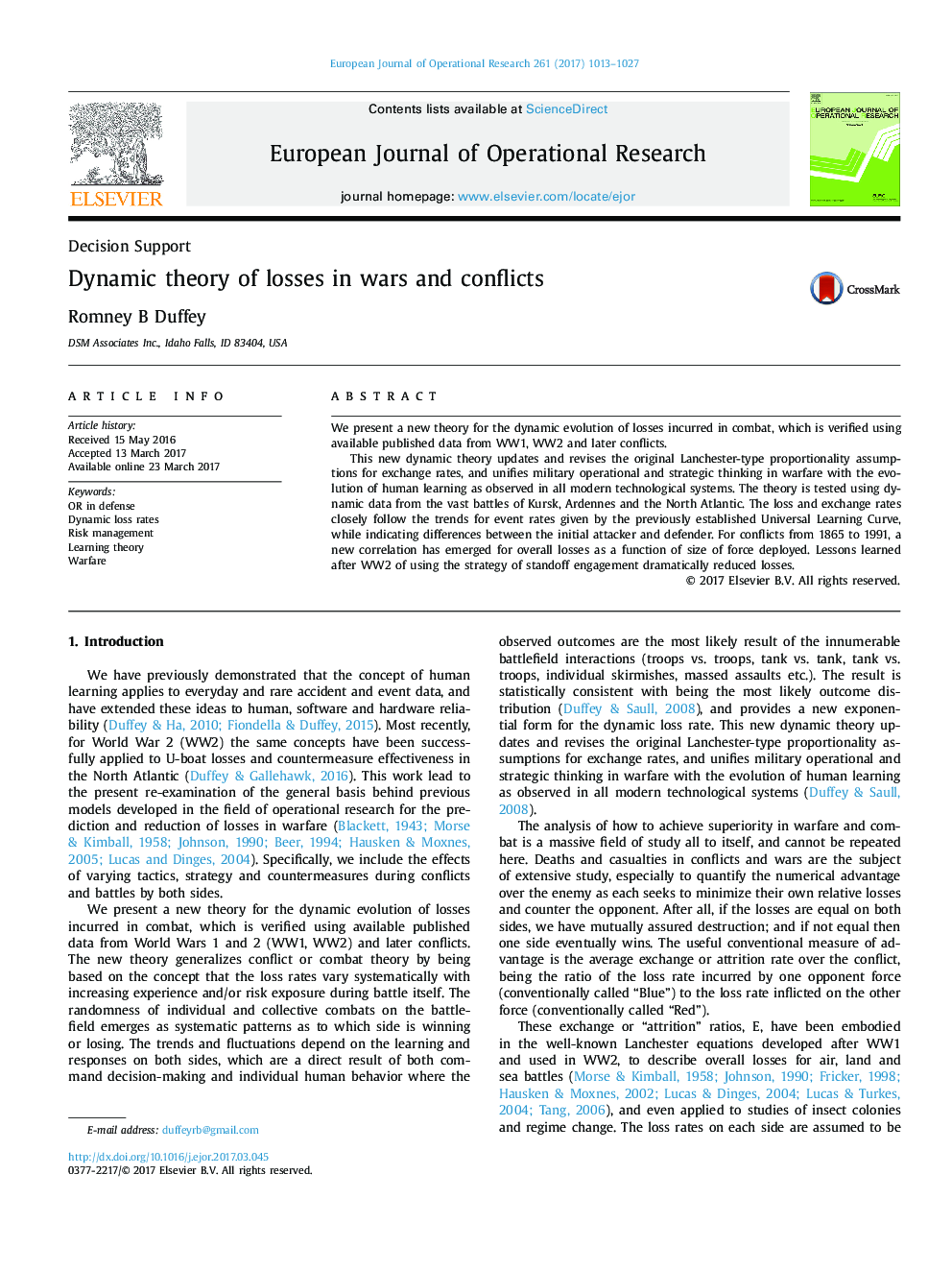| Article ID | Journal | Published Year | Pages | File Type |
|---|---|---|---|---|
| 4959484 | European Journal of Operational Research | 2017 | 15 Pages |
Abstract
This new dynamic theory updates and revises the original Lanchester-type proportionality assumptions for exchange rates, and unifies military operational and strategic thinking in warfare with the evolution of human learning as observed in all modern technological systems. The theory is tested using dynamic data from the vast battles of Kursk, Ardennes and the North Atlantic. The loss and exchange rates closely follow the trends for event rates given by the previously established Universal Learning Curve, while indicating differences between the initial attacker and defender. For conflicts from 1865 to 1991, a new correlation has emerged for overall losses as a function of size of force deployed. Lessons learned after WW2 of using the strategy of standoff engagement dramatically reduced losses.
Related Topics
Physical Sciences and Engineering
Computer Science
Computer Science (General)
Authors
Romney B Duffey,
